The Impact of Man-Made Noise on Arctic Marine Mammals
Listen to the Sounds of the Arctic
Marine mammals, including those found in the Arctic, depend more on their hearing than other senses because sound travels well underwater. Bowhead whales; walrus; ringed, ribbon, and bearded seals; and other marine mammals rely on the sounds they make and hear to navigate, to contact one another, to court potential mates, to find food, and to avoid predators. Today, the rapid loss of summer sea ice is opening this once largely inaccessible region to ship traffic, oil exploration, and other industrial activities. These changes mean the Arctic Ocean is becoming noisier—and that could have a profound impact on animals that rely on sound to survive.
Many questions about the cumulative impacts of noise, particularly anthropogenic—or man-made—sound, on the Arctic marine ecosystem are still unanswered. Future research should be conducted and monitoring should be designed to assess the sensitivity of marine mammals to noise and to determine what can be done to reduce or mitigate the potential impact of anthropogenic noise.
Click on the links below each photo to hear a sound from the Arctic environment.
Animals at Risk
Bearded Seal
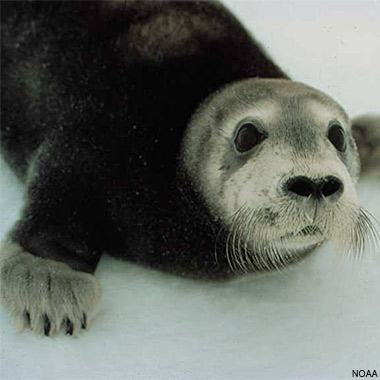
Male bearded seals make long, birdlike trills. These vocalizations are believed to advertise their breeding condition to nearby females.
Ribbon Seal
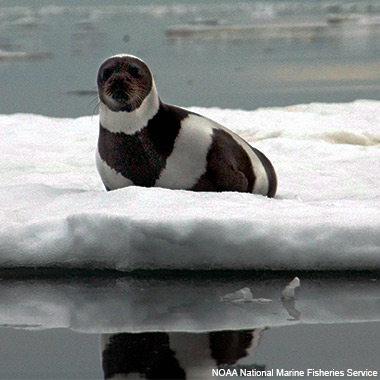
Ribbon seals, so-called for their white ribbon markings, make vocalizations that sound like downsweeps, roars, and grunts to communicate.
Audio clip courtesy of the Macaulay Library.
Bowhead Whale
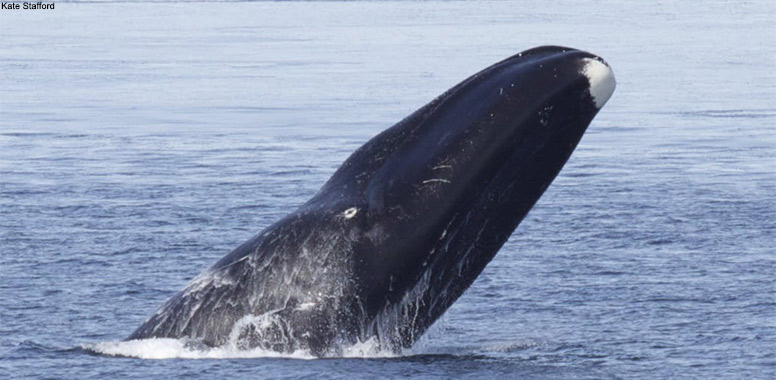
Bowhead whales produce a variety of low-frequency sounds, including songs. The whales also produce simpler grunts to maintain contact with one another as they migrate in ice-covered waters.
Walrus
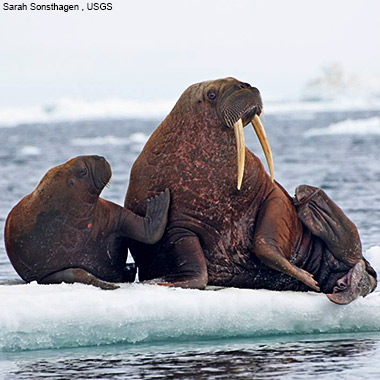
Walrus make many sounds above and below water. They roar, grunt, whistle, bark, and make distinctive “knocking" sounds you can hear here.
Beluga Whale
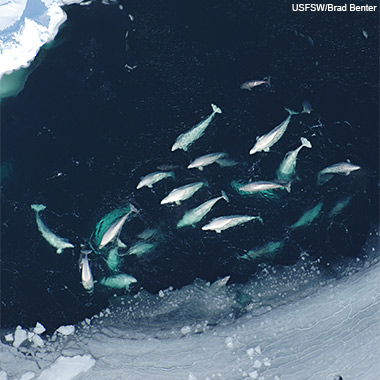
Beluga whales use echolocation clicks (similar to bats) to find food or to navigate through their environment.
Naturally Occurring Sounds
Sea Ice
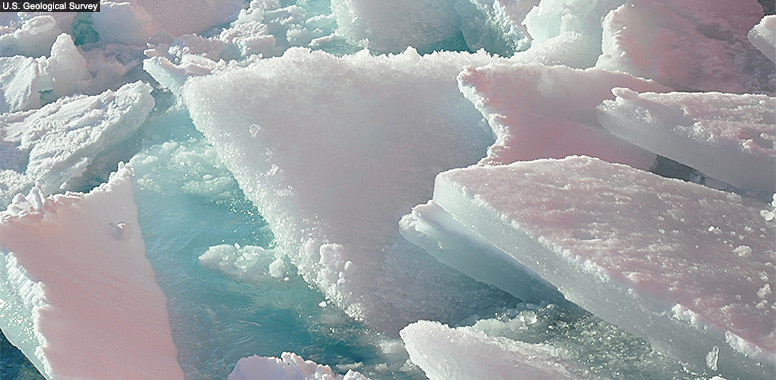
The movement of sea ice-including ice formation and deformation, pressure ridging, and cracking—is one of the main sources of naturally occurring sounds in the Arctic.
Anthropogenic Sounds:
Commercial Vessels
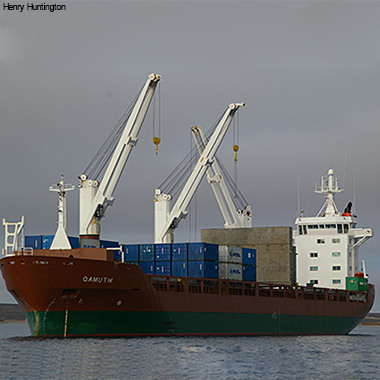
Large vessels produce continuous low-frequency noise that overlaps with and may interfere with the sounds made by bowhead whales. Ship traffic from icebreakers, research vessels, cargo ships, tankers, and tug and tow vessels is increasing in the Arctic.
Airgun
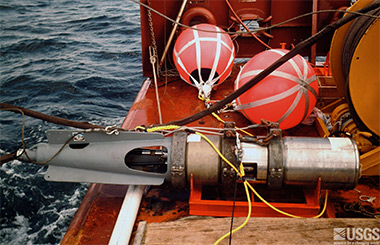
Air guns are used in seismic exploration for oil and gas reserves under the seafloor. These low-frequency blasts generate sound waves that reflect and refract off structures and are detected by seismic sensors placed in the region. The blasts are typically fired every few seconds for hours at a time and can be detected more than 1,000 kilometers (621 miles) away from the source.






